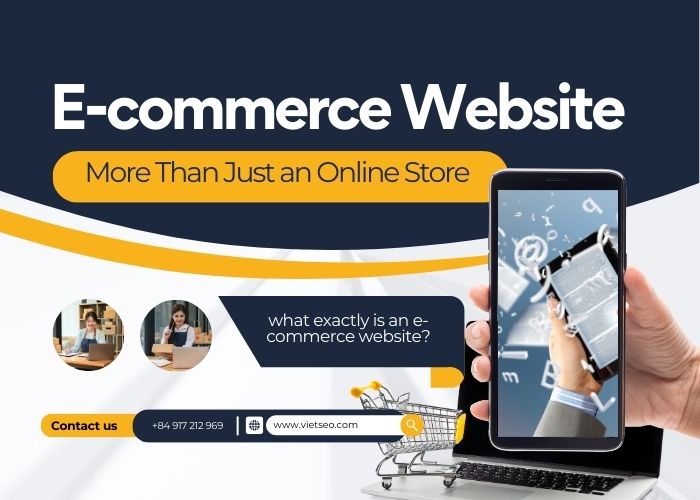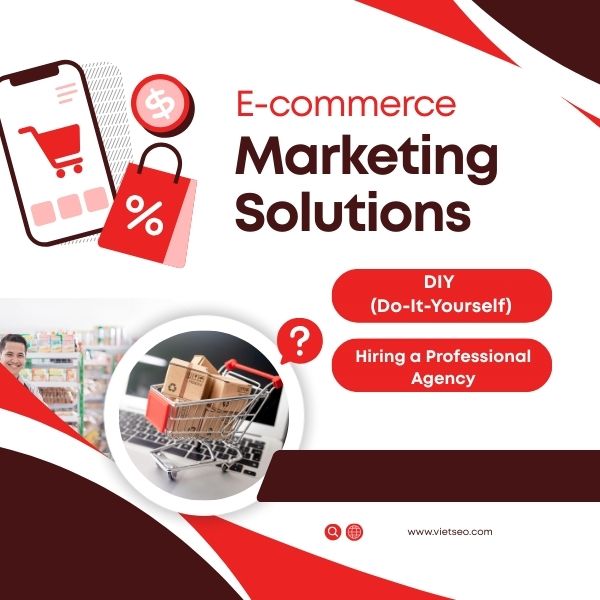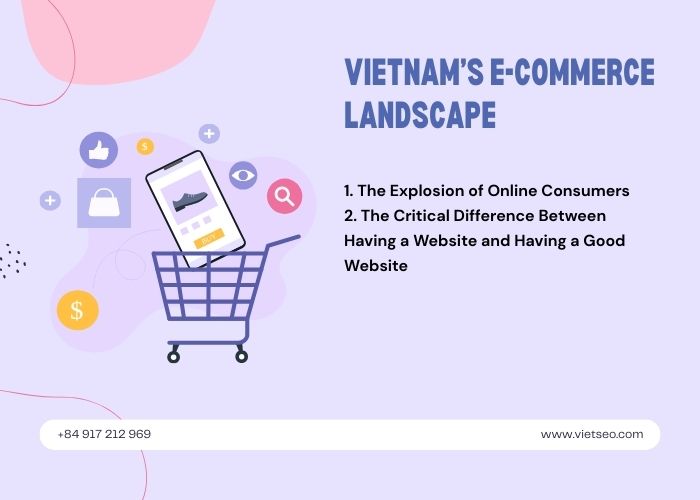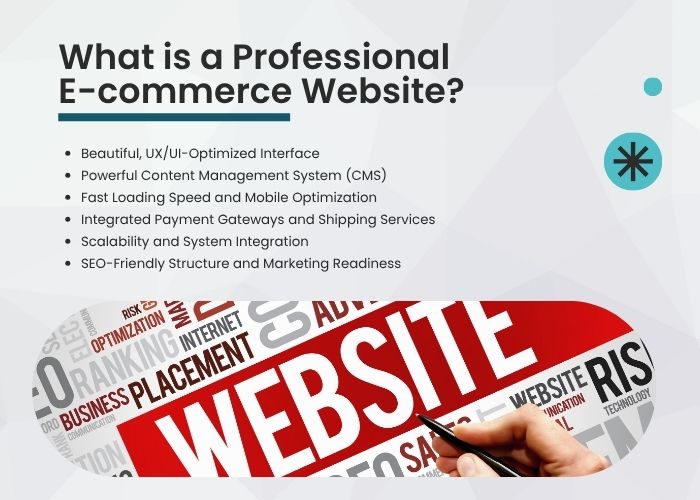E-commerce Website Design and SEO Optimization
The key to winning over users and Google in the digital age
E-commerce Website: More Than Just an Online Store
Shopping habits are evolving at lightning speed. A modern customer can browse products on their phone, add items to their cart, pay in just a few clicks, and expect to receive their order the very next day. In this fast-paced environment, an e-commerce website is no longer just a “digital storefront.” It has become the heart of the customer journey, a powerful marketing tool, and a multi-channel sales engine that connects businesses to buyers anytime, anywhere.
So, what exactly is an e-commerce website?
At its core, an e-commerce website is a digital platform where businesses can present their products or services, accept and process orders, handle secure payments, and provide customer support. But modern e-commerce sites go far beyond the basics. They often include:
- Shopping carts for smooth checkout experiences
- Member accounts for personalization and loyalty
- Inventory management systems to keep stock accurate in real-time
- Vouchers, discount codes, and loyalty points to boost repeat purchases
- Integrated shipping and payment gateways for convenience and trust
Yet, having all these features isn’t enough. What makes a truly successful e-commerce website is how seamlessly it guides customers: helping them discover the right products, compare options, make confident buying decisions, pay effortlessly, and—most importantly—return for their next purchase.
Common Mistakes in Building E-commerce Websites
It’s not unusual for businesses to invest heavily in building an e-commerce website, only to be disappointed by the results. Some websites launch with high expectations but quickly run into problems such as:
- Zero traffic — the site exists, but no one visits.
- Traffic without sales — visitors come, but they don’t convert into paying customers.
- Technical breakdowns — errors start appearing after just a few months of use.
- Integration issues — payment gateways or shipping partners can’t be connected smoothly.
- Poor mobile experience — the site looks fine on desktop but becomes clumsy or unusable on smartphones.
- Low visibility on Google — even with hundreds of products listed, the site fails to appear in search results.
The underlying problem is often the same: businesses focus too much on the “look” of the website and neglect the bigger picture. A successful e-commerce site requires more than attractive design — it needs a solid technical foundation, SEO-friendly structure, smooth user experience, and reliable day-to-day performance. Without this comprehensive approach, even the best-looking online store can struggle to generate sustainable sales.
Essential Elements of a Modern E-commerce Website
In today’s highly competitive digital marketplace, having just a functional online store is not enough. To truly succeed, your e-commerce website must meet certain standards that ensure a smooth, secure, and enjoyable experience for both customers and administrators. At minimum, your site should include the following key elements:
-
UX/UI-Optimized Interface
- Clean, user-friendly layout that makes browsing effortless
- Advanced product search and filtering for quick discovery
- Fully responsive design that adapts seamlessly to desktops, tablets, and smartphones
- Simple, intuitive navigation that works for all age groups and tech skill levels
-
Fast Loading Speed
Customers won’t wait around. If your website takes more than three seconds to load, most visitors will leave. Achieving speed requires:
- Optimized images and media
- Clean, lightweight codebase
- Reliable hosting infrastructure with strong performance
-
Payment and Shipping Integration
- Multiple secure payment options (e.g., Momo, VNPAY, Stripe, PayPal)
- Seamless connections to shipping providers (GHN, GHTK, Viettel Post, DHL, etc.)
- Real-time shipping rates and tracking for transparency and convenience
-
Order, Product, and Inventory Management
A robust backend system is crucial for scalability. Your platform should enable you to:
- Manage hundreds or even thousands of products
- Track stock levels automatically
- Sync across multiple sales channels (e.g., website, social media, marketplaces)
-
SEO Built-In from Day One
Search engine optimization is not an afterthought — it must be baked into the foundation. Essential SEO features include:
- Clean URL structure and metadata fields
- Schema markup for products and categories
- Automatic XML sitemap generation
- Optimized internal linking
-
Security and Data Protection
Trust is the backbone of online business. To safeguard your customers and your business, your site must:
- Use SSL certificates (HTTPS)
- Implement protections against common cyberattacks
- Perform regular backups to secure order history, product data, and customer information
By incorporating these elements, your e-commerce website becomes more than a sales tool — it becomes a long-term growth engine that inspires trust, drives conversions, and keeps customers coming back.
Popular E-commerce Website Models
Not all e-commerce websites are built the same. The right model depends on your industry, target audience, and long-term strategy. Here are the most common e-commerce website types:
-
B2C – Business to Consumer
- The most familiar model, where retailers sell directly to end customers.
- Examples: online fashion stores, cosmetic brands, electronics, home appliances.
- Focus: creating a smooth shopping experience, fast checkout, and personalized promotions to encourage repeat purchases.
-
B2B – Business to Business
- Designed for wholesalers, distributors, or manufacturers selling in bulk to other businesses.
- Typically includes features like bulk order management, quote requests, tiered pricing, and dedicated business accounts.
- Focus: efficiency, scalability, and integration with supply chain systems.
-
C2C – Customer to Customer
- Marketplace platforms where individuals can list and sell products directly to each other.
- Examples: Chợ Tốt, Shopee C2C, eBay.
- Requires strong security, easy listing tools, and trust-building features such as ratings and buyer/seller protection.
-
D2C – Direct to Consumer
- A fast-growing model where brands bypass traditional distributors and sell directly to customers.
- Benefits: better control over branding, customer experience, and pricing.
- Popular with startups and lifestyle brands looking to build strong customer loyalty.
Each model comes with its own opportunities and challenges. Choosing the right one will depend on your products, market positioning, and how you plan to engage with your customers.
SEO Optimization for E-commerce Websites: A Must, Not an Option
In the digital marketplace, SEO is no longer a “nice to have” — it’s the backbone of sustainable growth. For e-commerce businesses managing hundreds or even thousands of products, search engine optimization is the most reliable and cost-effective way to attract customers.
Building an SEO-friendly website from the ground up is critical. That means structuring your site so that search engines can easily crawl, index, and rank your products. If SEO is neglected, even high-quality products may remain invisible to the very people looking for them — while competitors take the spotlight.
Why SEO Matters for E-commerce:
- Google is the starting point of shopping journeys — Most buyers begin their product search on Google.
- Without SEO, you lose customers to competitors — If your site doesn’t rank, your competitors will capture those sales.
- Generates consistent traffic without ad spend — Unlike paid ads, organic search traffic keeps coming without ongoing costs.
- Delivers long-term growth — A well-optimized site builds authority and visibility that compound over time.
In short, SEO is not just another marketing tactic; it’s the foundation of e-commerce success. By prioritizing it early, you ensure your website doesn’t just look good but actually drives sales, builds brand trust, and fuels lasting growth.
10 Essential SEO Factors for E-commerce Websites
For an e-commerce website to rank well and drive consistent sales, SEO must be woven into every layer — from the technical foundation to the smallest content details. Below are ten critical SEO factors every online store should focus on:
-
SEO-Friendly Website Structure
- Build a clear, logical category hierarchy so both users and search engines can navigate easily.
- Use short, descriptive URLs (e.g.,
/running-shoes/nike-air) instead of long, messy links. - Add breadcrumb navigation to improve usability and help Google understand site structure.
-
Optimized Category Pages
- Avoid leaving category pages empty or with only product grids.
- Include short introductions, keyword-rich headings, and compelling visuals.
- Add descriptive text to give context and improve relevance for search engines.
-
Optimized Product Detail Pages
- Write unique, complete product descriptions instead of copying from suppliers.
- Display customer reviews, ratings, and FAQs to build trust and boost conversions.
- Implement product schema to show price, availability, and ratings directly in Google search results.
-
Speed and Core Web Vitals
- Use a CDN to deliver content faster to global users.
- Serve optimized images (e.g., WebP format) for better performance.
- Continuously improve Core Web Vitals like LCP (Largest Contentful Paint) and TTI (Time to Interactive).
-
Smart Internal Linking
- Suggest related products on product detail pages.
- Link between blog posts, category pages, and product pages to distribute SEO value and keep users engaged.
-
Blog for SEO Support
- Create content that educates and inspires — buying guides, product comparisons, styling tips, and tutorials.
- Target long-tail keywords to capture niche traffic and buyers with strong intent.
-
Image Optimization
- Name image files descriptively (e.g.,
nike-air-running-shoes.jpg). - Add accurate, keyword-relevant alt text for accessibility and SEO.
- Compress images to reduce file size without sacrificing quality.
- Name image files descriptively (e.g.,
-
Mobile Optimization
- Remember that 70–80% of users shop via smartphones.
- Ensure responsive design, clear call-to-action buttons, and easy-to-use mobile navigation.
-
Integration with Google Tools
- Use Google Search Console to monitor indexing and performance.
- Track conversions and behavior with Google Analytics.
- Deploy Google Tag Manager for flexible tracking without code bloat.
-
Structured Data (Schema Markup)
- Highlight essential product details like ratings, price, and stock status in search results.
- Enhance click-through rates and build credibility by standing out with rich snippets.
By applying these ten factors, you’re not just optimizing your site for Google — you’re creating a smoother shopping experience that attracts, converts, and retains customers.
Effective SEO Tools for E-commerce
Managing SEO for an e-commerce website — especially one with hundreds or thousands of products — can be overwhelming without the right tools. Thankfully, there are powerful platforms that make the process easier, from keyword research to technical audits and performance tracking. Some of the most effective tools include:
- Ahrefs / SEMrush – Comprehensive suites for keyword research, competitor analysis, and backlink tracking. Essential for discovering what customers are searching for and how to outrank competitors.
- Screaming Frog – A technical SEO crawler that helps identify issues like broken links, duplicate content, missing tags, or crawl errors that could block Google from indexing your site.
- Rank Math / Yoast (for WordPress) – User-friendly plugins that simplify on-page SEO, making it easy to optimize titles, meta descriptions, sitemaps, and schema without coding.
- Hotjar / Microsoft Clarity – Tools that record user sessions and provide heatmaps, helping you understand how visitors interact with your website and where they drop off.
- Google PageSpeed Insights – A free tool to test page speed and Core Web Vitals, offering practical suggestions to boost performance across devices.
By combining these tools, businesses can build a complete SEO workflow: researching opportunities, fixing technical issues, optimizing content, improving user experience, and monitoring results.
Case Study: SEO Optimization for a Fashion E-commerce Website
When this fashion brand first launched its online store, it struggled to attract customers despite offering quality products. The problems were clear:
Before SEO:
- Fewer than 100 daily visits, mostly from direct links or social shares
- A slow, outdated interface that wasn’t mobile-friendly
- No supporting blog content, leaving product pages empty and uninspiring
- Weak search visibility, making it nearly impossible for potential buyers to find the site on Google
To address these challenges, a comprehensive SEO strategy was implemented. This included redesigning the site for speed and responsiveness, enriching product pages with unique descriptions and visuals, launching a blog with fashion tips and style guides, and optimizing for carefully chosen keywords.
After 6 Months of SEO:
- Traffic skyrocketed to 1,500+ daily visits
- 70% of all visits came from organic Google searches
- High-value keywords such as “high-end office dress” and “cotton women’s shirt” reached the top 3 positions on Google
- Overall sales grew by 200%, proving that SEO directly fueled revenue growth
This case highlights a crucial lesson: with the right SEO approach, even a struggling e-commerce site can transform into a high-performing sales machine in a matter of months.
Designing an E-commerce Website: DIY or Hire Professionals?
When it comes to building an online store, businesses often face a big question: should you create the site yourself or bring in professional help? Each option has its own advantages and trade-offs.
DIY (Do-It-Yourself)
- Lower upfront cost, making it appealing for startups with tight budgets
- A good choice for tech-savvy individuals comfortable with website builders or coding
- However, it can be very time-consuming, and mistakes in SEO, security, or payment setup can be costly in the long run
Hiring a Professional Agency
- Delivers a site that’s SEO-ready and optimized for user experience from day one
- Ensures seamless integration of orders, payments, shipping, and inventory management
- Provides ongoing technical support, updates, and troubleshooting so your site stays reliable
- Designs with sales, scalability, and long-term growth in mind — not just appearance
In short, while DIY might save money initially, working with a professional agency gives you a stronger foundation, reduces risks, and helps you grow faster in the highly competitive e-commerce space.
Comprehensive E-commerce Website Design & SEO Optimization
With more than 18 years of expertise in SEO and web development, Viet SEO has helped countless businesses transform their online presence into powerful, revenue-generating platforms. We don’t just build e-commerce websites — we create complete, SEO-friendly solutions that are fast, secure, and designed to convert.
What Viet SEO Delivers:
- SEO-optimized e-commerce website design – clean structure, schema-ready, and built for high Google rankings
- Performance, speed, and security enhancements – Core Web Vitals optimization, SSL, mobile-first design
- Integrated business systems – seamless connections with payment gateways, shipping partners, and CRM platforms
- Content and keyword strategy consulting – from product descriptions to long-term content marketing and backlink growth
- Website management and training – empowering your team with the skills to update and manage content independently
- Ongoing technical support – continuous maintenance, updates, and troubleshooting to keep your store running smoothly
At Viet SEO, every project is tailored to your industry, growth goals, and customer journey — ensuring your e-commerce site doesn’t just look professional, but actually drives measurable results.
Building an E-commerce Website Is Only the First Step — Optimization Is the Real Journey
Launching an e-commerce website is exciting, but a sleek design alone doesn’t guarantee success. Without traffic and conversions, even the most visually stunning site becomes a wasted investment. What truly makes the difference is strategic design combined with continuous optimization.
When done right, your website evolves into a 24/7 automated sales engine — attracting visitors, converting them into loyal customers, and generating steady revenue without relying entirely on paid ads.
The formula is simple yet powerful:
- Build it right from the start — lay a strong technical and SEO foundation
- Optimize continuously — adapt to user behavior, search algorithms, and market trends
- Maintain it for the long term — ensure performance, security, and scalability
This ongoing cycle is the real key to success in modern e-commerce. With the right strategy and consistent effort, your online store won’t just exist — it will thrive.




